Blog
What Is Cupping And How Will It Help Me?

What is cupping? Is it something that could benefit me? Is it safe? How is it done? Countless other questions could come cascading after those first few. So let’s take a few minutes to lay a basic foundation so that we can understand exactly what cupping is (traditionally known as Chinese cupping), learn about how it is done, the various techniques, and finally if it is something that could be beneficial for you and your particular needs.
The most basic premise of cupping is that it is a process where a vacuum is created and used to draw the skin up, causing blood flow to targeted areas of the body to promote healing. How this suction is created and what the primary goals are takes shape by way of two particular practices; dry and wet.
Dry cupping: With this technique air pressure is created by heating the cup(s) or the air inside the cup(s). More modern techniques have used suction pump vacuums to create this air pressure. The cups themselves range from plastic, glass, bamboo and rubber. The cups are then placed on different parts of the body selected by the practitioner. These are the basic principles of dry cupping, and then you have the other technique most commonly practiced, wet cupping.
Wet cupping: Unlike dry cupping, the air pressure or suction used may be considerably milder. Again, a cup is used, and suction is generated via heat or vacuum to create pressure upon the selected area(s). After a few minutes, the cup is then removed, and a small superficial skin incision is made using a cupping scalpel, acupuncture needle, plum blossom needle or lancet. From this point the cup is reapplied to draw a small amount of blood, hence the namesake ‘wet’ cupping.
There are some other variations of these two primary forms of cupping, i.e., running/sliding cupping, but these all have the same concepts in the end. Now, just a little elaboration about the purpose behind this ‘cupping’ practice. As we mentioned earlier, the essential aim is to draw or increase blood flow to the desired area to promote healing. The extent of the benefits run much deeper for those proponents of cupping.
From the suction and, therefore, the pulling force of the muscles and skin there is a loosening effect of muscles in the applied area. There is also an increase of blood flow as well as an additional aid in helping to sedate the nervous system which are added benefits that are especially useful for individuals with high blood pressure. This leads us back to one of the first inquiries we had, is it beneficial for me, and aside from individuals with high blood pressure let’s run through a brief list of the most common uses for cupping.
Cupping has been used for a wide variety of ailments, and although we surely won’t cover every reason or remedy for which cupping is used, we are going to attempt to give a broad overview. Due to the increased blood flow and muscle relaxation effect cupping is used to help those with back pain, neck and muscle stiffness in general, fatigue and even rheumatism. Related not only to the muscle impact but also to the sedating effect on the nervous system, anxiety, fatigue and migraines have also been addressed by cupping.
Other issues attributed to cupping have also been cited, some of these include; releasing toxins in the body, clearing blockages and aiding in the refreshing of arteries and veins. Even common issues like the everyday cold have been noted as being helped by cupping.
There is a mainstream thought process that seems to suggest that cupping is most effective when combined with other treatments such as acupuncture or massage. In the end, the question if cupping is something that could benefit you personally is truly your decision. There are a variety of reports and studies that make it clear that there are some health benefits.
It is true that knowledge is power, and with that being said we can only encourage you to empower yourself and learn as much about this process as possible. At the very least, we hope this article has given you some basic understanding of what cupping is and how it works. If you are interested in learning more please contact us at your earliest convenience.









